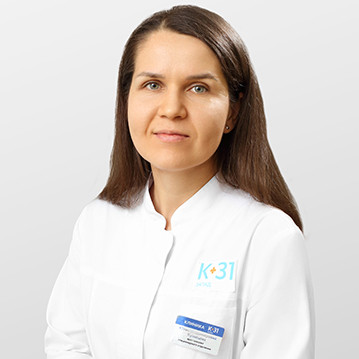The anus and anal canal are the final sections of the digestive tract responsible for removing food waste from the body. Despite their physiological role, these structures sometimes become the locus of development of oncological processes.
Malignant tumors located in this anatomical zone require timely diagnosis and properly selected treatment.
Etiology and risk factors for anal cancer
Anal canal cancer is a fairly rare disease. The main etiological factor predisposing to the development of this pathology is infection with the human papillomavirus, mainly the HPV-16 subtype. It is noted that the incidence of this disease is 2 per 100,000 people per year with a tendency to increase by 1-3% annually.
There are a number of additional factors that increase the risk of developing anal tumors:
- Decreased immunity. It is triggered by various reasons, including taking immunosuppressive drugs and organ transplantation.
- Autoimmune diseases. Oncology progresses against the background of systemic lupus erythematosus and rheumatoid arthritis.
- Pathologies of the digestive system, for example, anal polyps or severe Crohn's disease.
Anal cancer can also be caused by constant irritation or injury to the anus.
The majority of diseases are diagnosed after 45 years of age, although people in the younger age group (35-44 years) are also at risk.
In the absence of timely treatment, this type of oncology has a high mortality rate. However, with early diagnosis and the right approach to therapy, a complete cure is possible.
Oncogenesis of the anal canal
Anal cancer begins with one malfunctioning cell. In the anal canal, such elements are formed due to various external and internal factors, including exposure to certain viruses or chemicals.
When a mutated cell appears in the body, its life cycle changes. Unlike normal cells, whose lifespan is strictly regulated, cancer cells divide uncontrollably and do not die.
Cancer most often begins in the mucous membrane. This area is rich in cells that are constantly being renewed and because of this it is overly susceptible to mutations. In addition, the anal canal contains glands that release mucus to facilitate bowel movements.
At the initial stage of tumor development, the immune system actively fights abnormal cells, trying to destroy them. However, in some cases, cancerous elements manage to “camouflage” or become resistant to its actions. Gradually accumulating, these cells form a primary tumor.
Over time, the neoplasm begins to invade surrounding tissues. Sometimes, even more dangerously, it spreads cancer cells throughout the body through the circulatory or lymphatic systems. This process leads to the formation of metastases in other organs.
Treatment and prognosis depend on the stage of the disease, the size of the tumor, its location, and the general condition of the patient.
Manifestation of cancer of the anus: when to call the doctor
Anal cancer in its initial stages has symptoms similar to other, less dangerous diseases of the rectum.
Here are a few symptoms indicating the presence of a tumor on the anus:
- Discomfort in the anus. Refers to early symptoms of anal cancer. Represents an unpleasant sensation, similar to the presence of a foreign object inside. Additionally, there is painful itching.
- Painful sensations during defecation. They appear in the anal area and can be periodic or constant.
- Dermatological signs. Symptoms such as itching, burning and redness in the anal area appear.
- Manifestations of blood. Visible blood marks appear on toilet paper or in stool.
- Blood circulation instability. This often manifests itself as anal bleeding.
With the development of anal cancer, weeping of the skin near the anus also occurs. Ulcers form in the area of the thigh and anus and the lymph nodes become enlarged.
In later stages, especially when the muscles responsible for holding stool are damaged, fecal incontinence is possible. The patient's general condition also worsens: there is loss of appetite, fatigue, weight loss and general weakness.
When it comes to colorectal cancer, the first symptoms in women and men are often disguised as other problems. This makes diagnosis difficult. In women, rectovaginal fistulas appear, in men, problems with urination due to cancer of the urethra and prostate.
Visually, rectal cancer may appear as a nodular or uneven growth in the rectum. It can be detected during colonoscopy.
If you have a question: “How can you tell if you have rectal cancer?”, pay attention to such obvious manifestations as changes in stool, blood in the stool, or constant pain in the pelvic area. In any case, if you suspect cancer, it is better to undergo examination by a specialist.





